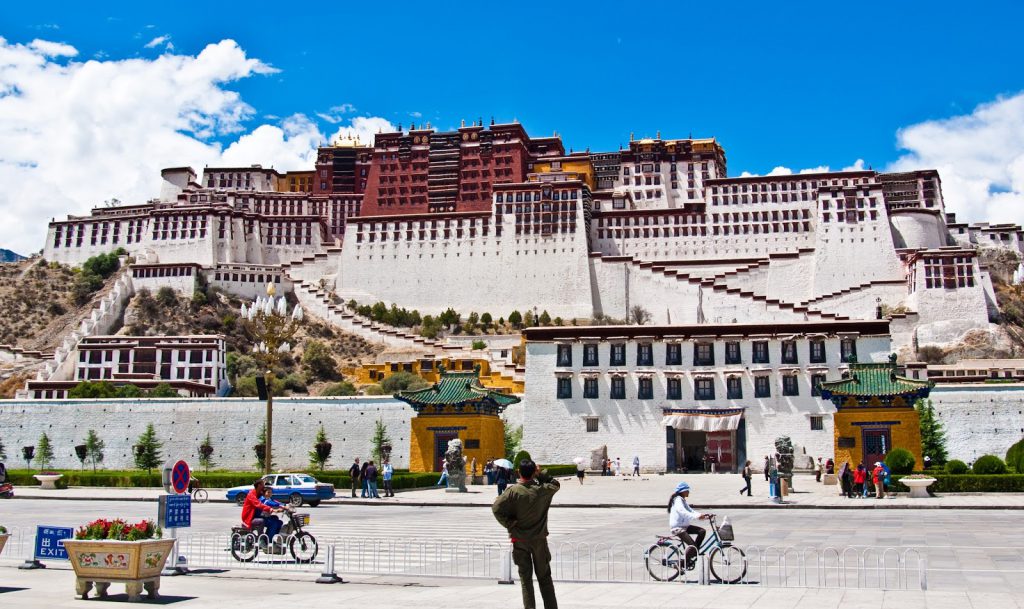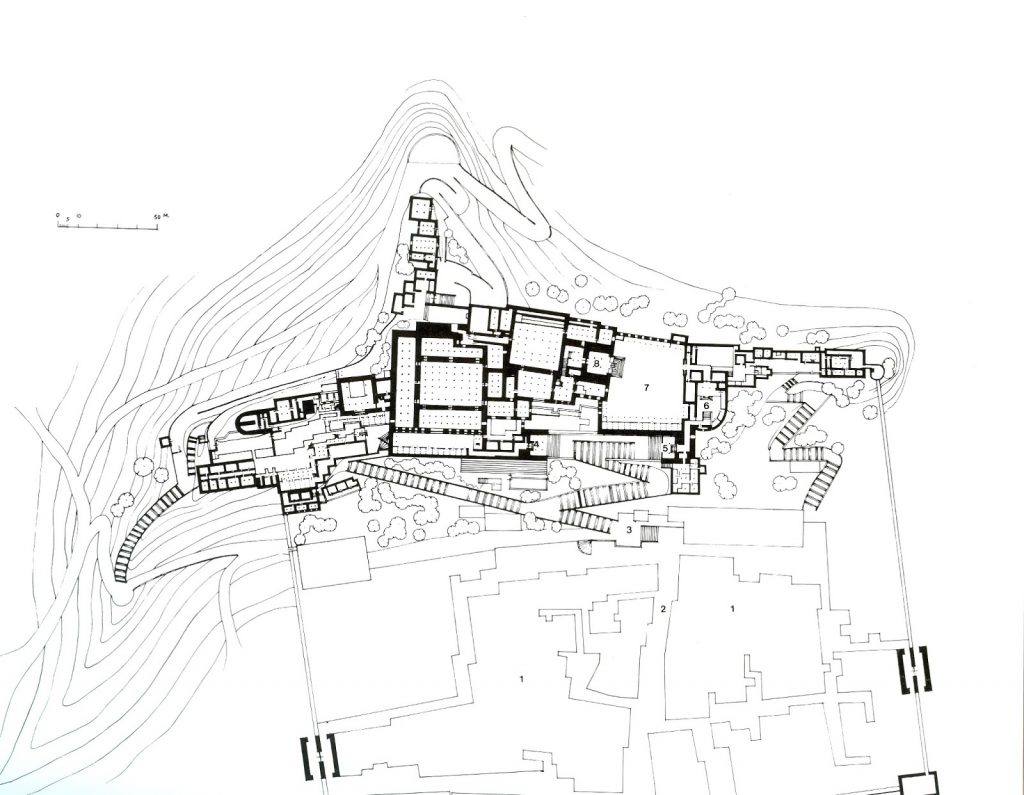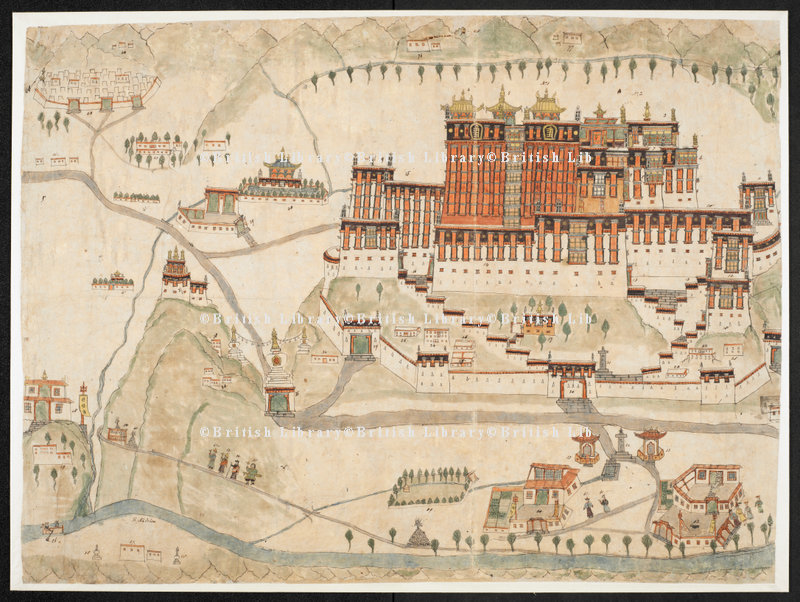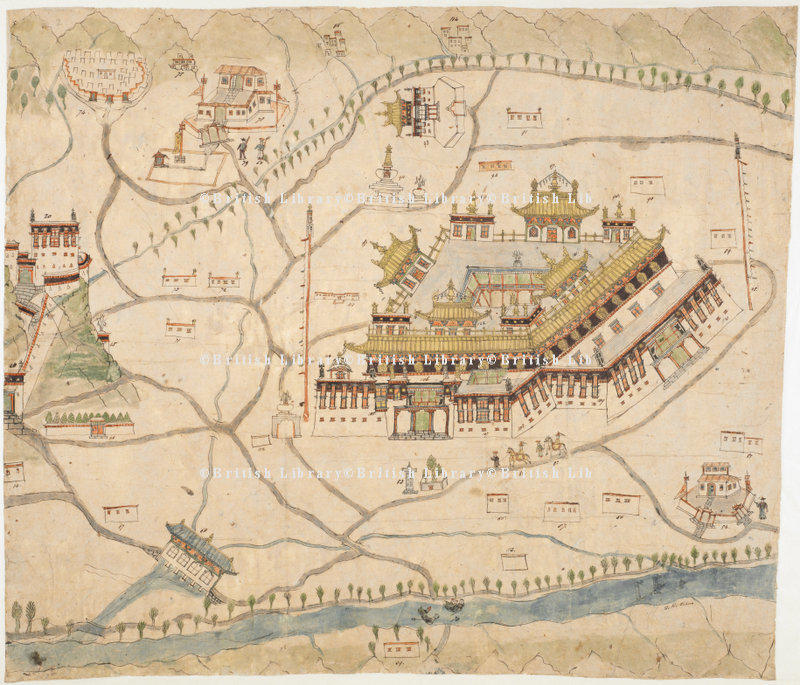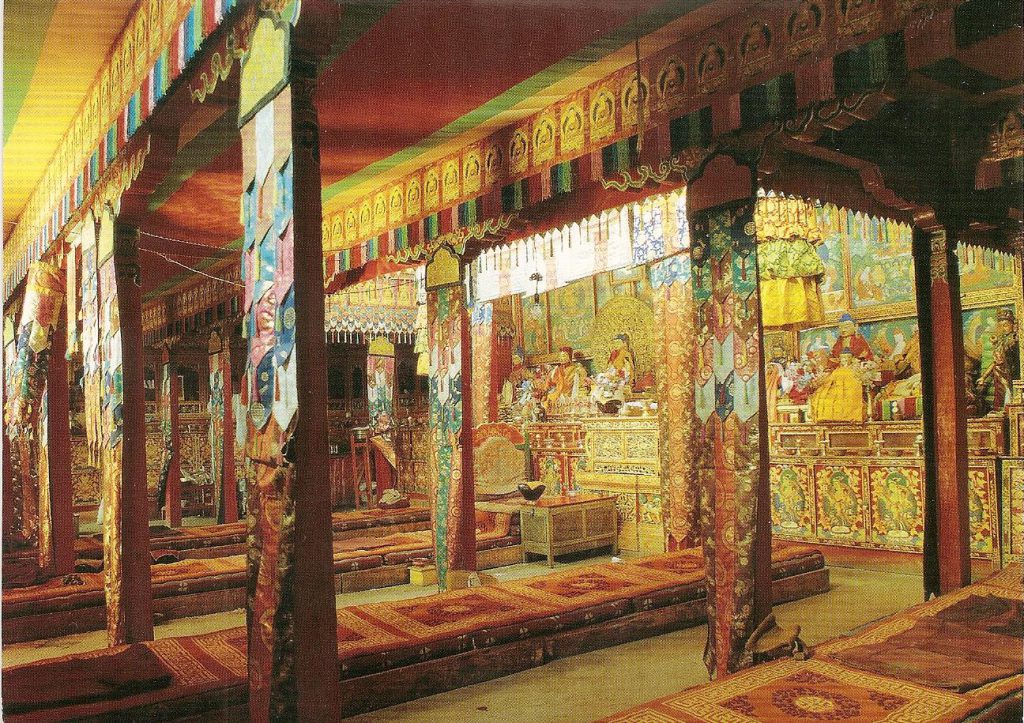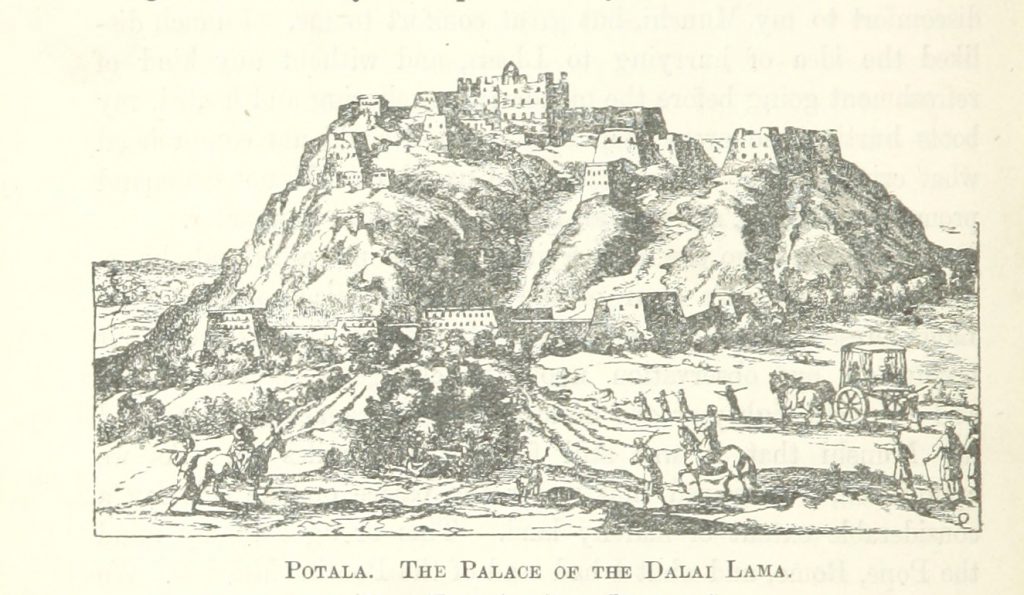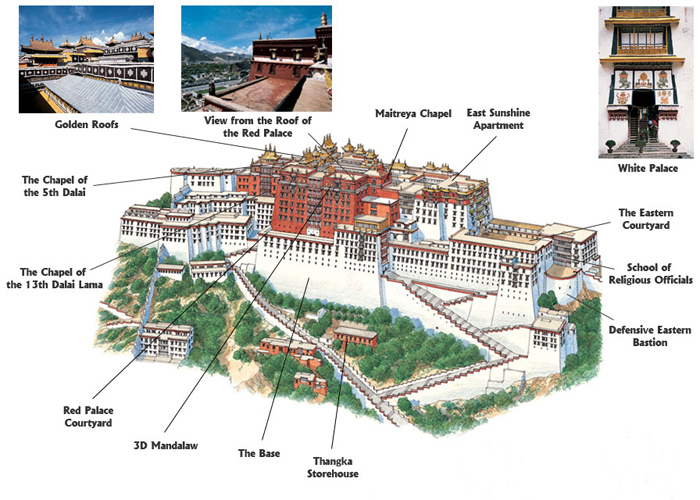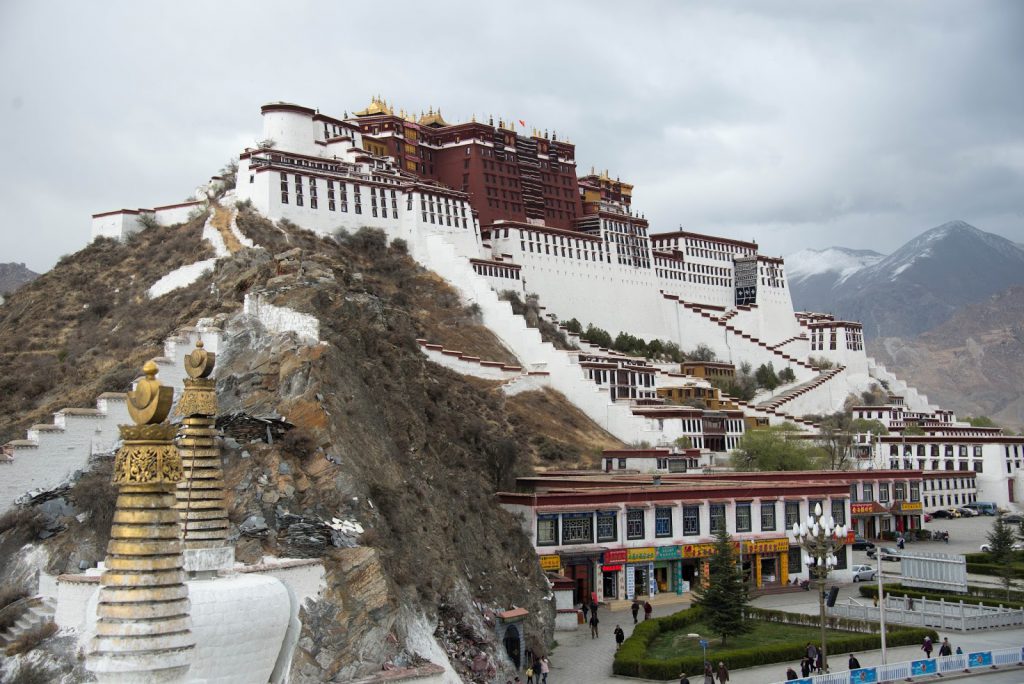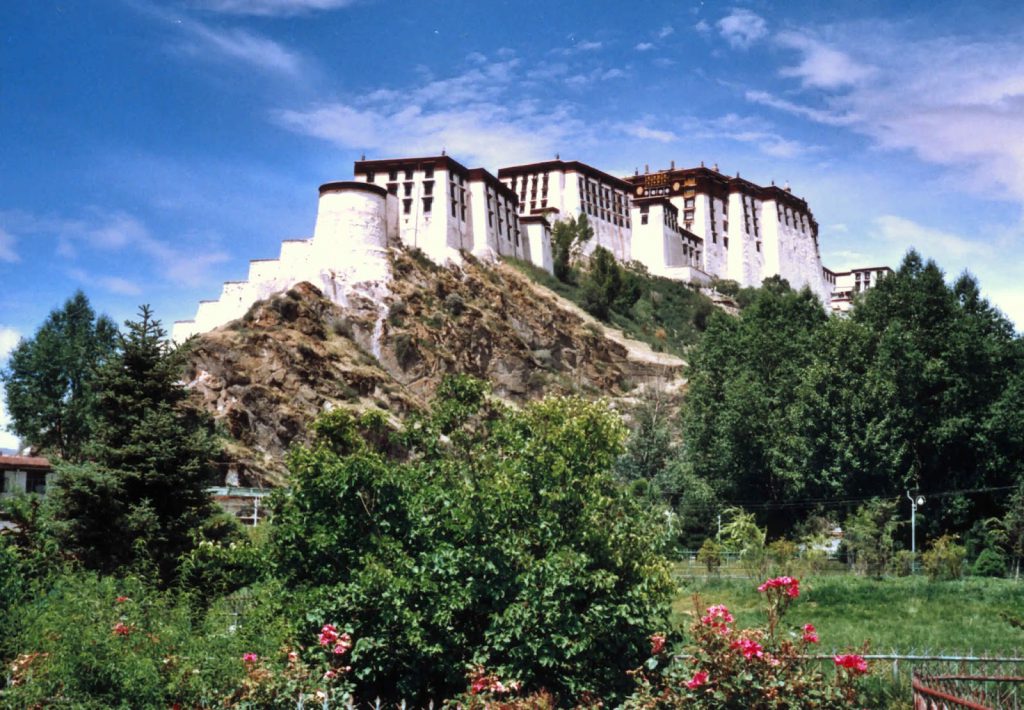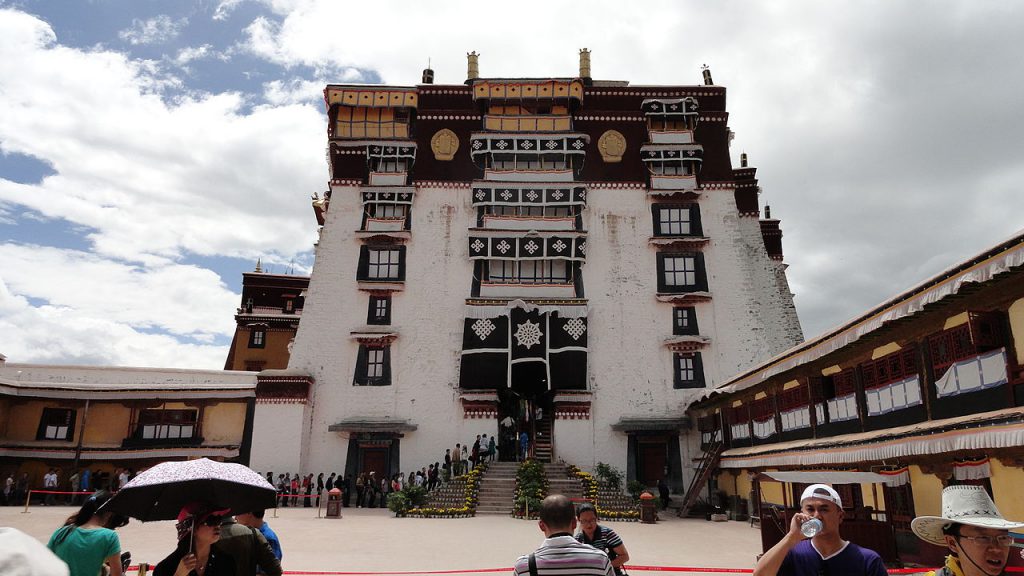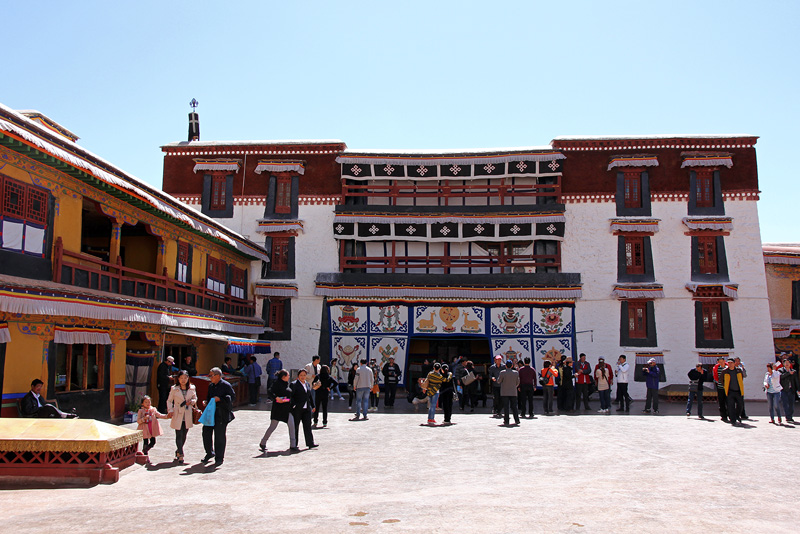The Potala Palace, built during the XVII Century was the residence of the Dalai Lama until 1959 (year of the Tibetan Uprising and the later exile of the Dalai Lama to India). Nowadays, it is considered the most important architectural space of the Tibetan Buddhism . The palace started to be built in 1645 in the Center of the Lhasa Valley at an altitude of 3,700 meters and overlaying the ruins of an old fortress. It measures 400 meters long and 350 meters wide.
El Palacio de Potala, construido en el siglo XVII, fue la residencia del Dalai Lama hasta 1959 (año de la revuelta en el Tíbet contra la ocupación china y posterior exilio del Dalai Lama a India) y el lugar arquitectónico más importante del budismo tibetano. El palacio comenzó a construirse en 1645 en el valle de Lhasa a una altura de 3.700 metros y sobre las ruinas de una antigua fortificación. Tiene unas dimensiones de 400 metros de largo por 350 metros de ancho.
The Potala Palace stands out for its topographical adaptation to the mountain. It merges a system of terraced retaining walls and staircases with vertical towers that are embedded within the mountain. The base walls of the buildings have a thickness of up to five meters and copper is poured into the foundations to help proof it against earthquakes.
El palacio destaca por su adaptación topográfica al terreno mezclando un sistemas de muros y escaleras aterrazadas con varias torres verticales que se incrustan en la montaña. Los muros en la base de estos edificios llegan a tener un grosor de cinco metros y mezclan la piedra con cobre fundido para evitar su derrumbe en caso de terremotos.
Potala Palace is constituted by the White Palace and the Red Palace and other secondary buildings.
El propio palacio está constituido por el Palacio Blanco, el Palacio Rojo y varios edificios secundarios.
The White Palace shelters the Main Ceremonial hall of the Dalai Lama as well as his private rooms and an audience hall on the uppermost floor. A yellow central courtyard divides these private rooms of the Dalai lama and his monks with the Red Palace where the praying rooms are located. A series of narrow galleries and hallways connect the different chapels, libraries and other rooms.
El Palacio Blanco acoge la sala de ceremonias del Dalai Lama así como sus dependencias privadas y una sala de audiencias en su planta superior. Un patio central, completamente pintado de amarillo separa estas estancias más privadas del Dalai Lama y sus monjes del Palacio Rojo donde se encuentras las áreas de estudio y rezo budista. Una serie de estrechas galerías y pasajes conectan las distintas capillas, bibliotecas y otras estancias.
Information via UNESCO
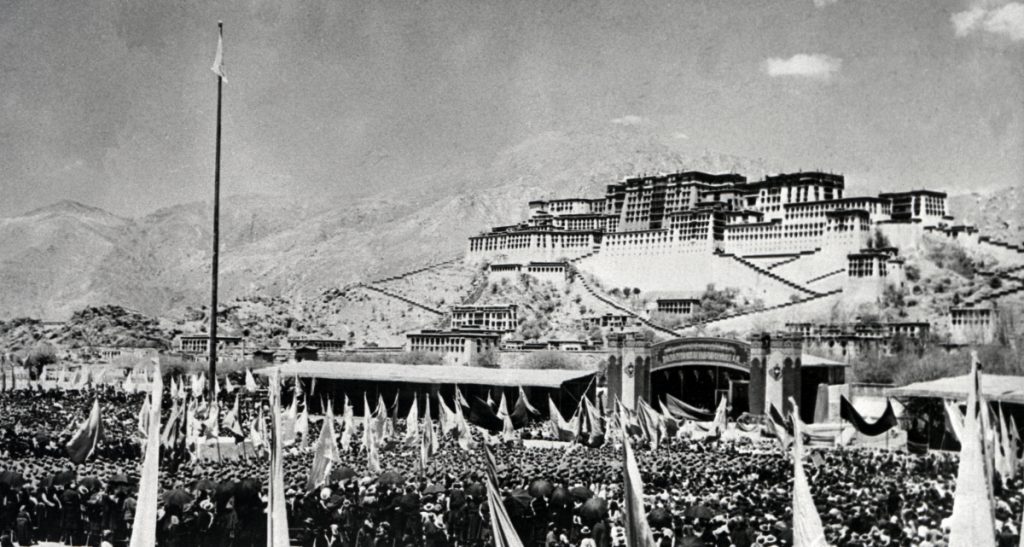 |
| Potala Palace during the 1959 Tibetan Uprising |
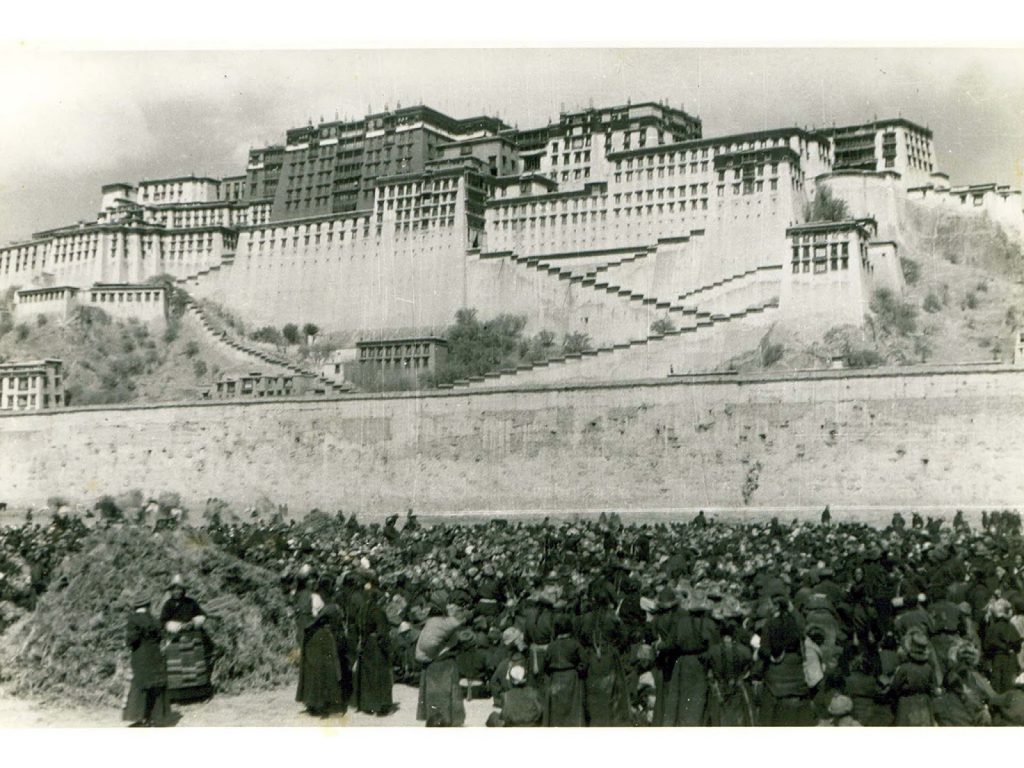 |
| Potala Palace during the 1959 Tibetan Uprising |
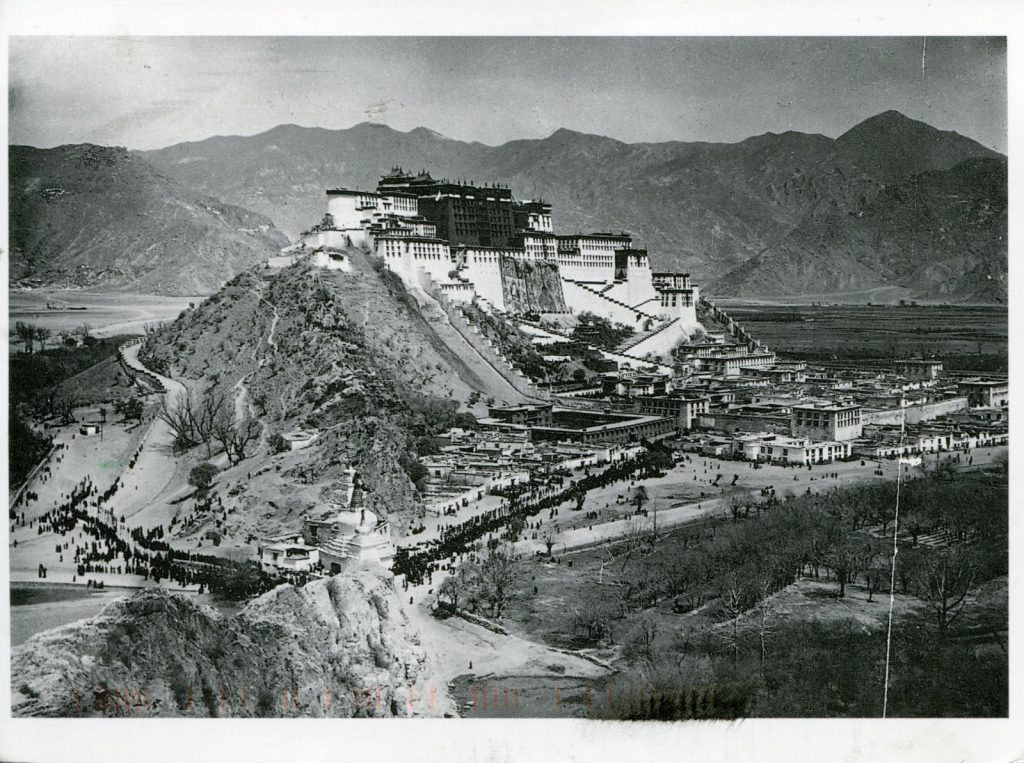 |
| Potala Palace during the 1959 Tibetan Uprising |


